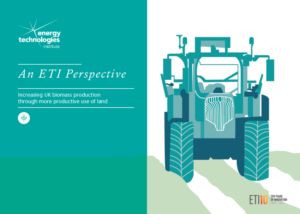Increasing UK biomass production through more productive use of land – new report published
 A new report summarising over 5 years of work commissioned by the Energy Technologies Institute (ETI) has concluded that the UK should be capable of growing around 1.4 million hectares of second generation bioenergy crops by 2050. This would mean planting 7.5% of UK agricultural land with Miscanthus, Short Rotation Coppice (SRC) willow and Short Rotation Forestry (SRF). The research suggests ways in which land could be made available for these crops by increasing farming productivity and reducing food waste. Achieving a thriving UK bioenergy crop sector would entail the planting on average 30,000-35,000 hectares per year for the next three decades. It also suggests that farmers could be persuaded to plant these crops by placing more value on the additional environmental benefits of these crops (e.g. flood mitigation potential, water quality improvements and pollination services) and improving the bioenergy market so that growing these crops is as lucrative as food crops.
A new report summarising over 5 years of work commissioned by the Energy Technologies Institute (ETI) has concluded that the UK should be capable of growing around 1.4 million hectares of second generation bioenergy crops by 2050. This would mean planting 7.5% of UK agricultural land with Miscanthus, Short Rotation Coppice (SRC) willow and Short Rotation Forestry (SRF). The research suggests ways in which land could be made available for these crops by increasing farming productivity and reducing food waste. Achieving a thriving UK bioenergy crop sector would entail the planting on average 30,000-35,000 hectares per year for the next three decades. It also suggests that farmers could be persuaded to plant these crops by placing more value on the additional environmental benefits of these crops (e.g. flood mitigation potential, water quality improvements and pollination services) and improving the bioenergy market so that growing these crops is as lucrative as food crops.
Kevin Lindegaard of Crops for Energy Ltd was one of the consultants involved in the Enabling UK Biomass and Refining Estimates of Land for Biomass projects that fed into this report.